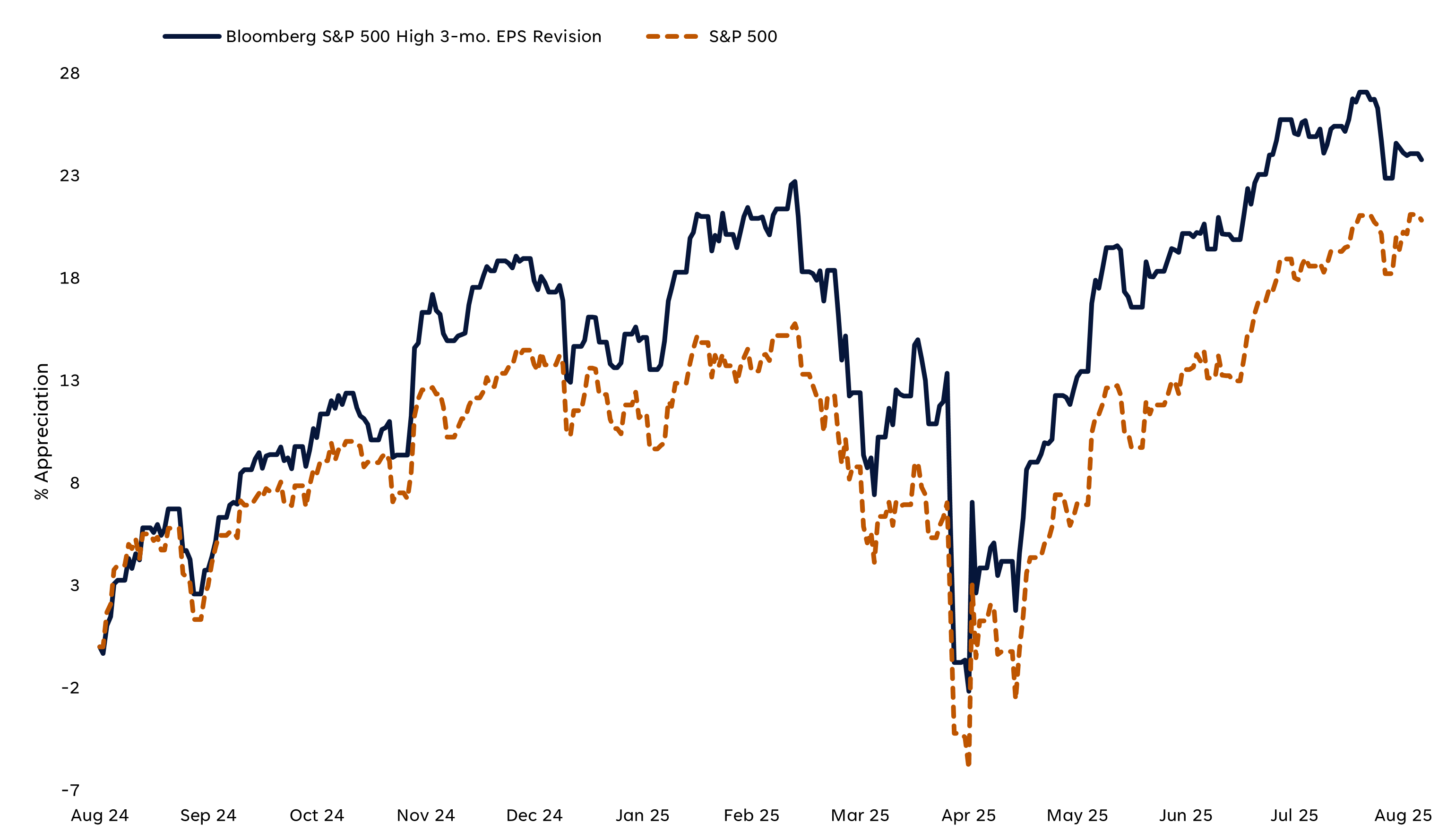Nvidia among investors in xAI’s $20 bln capital raise- Bloomberg
With 90% of S&P 500 companies having reported second quarter results, corporate America has handily topped expectations, displaying resilience in the face of a challenging policy environment. Although the S&P 500 had a relatively low bar to clear of just 4.9% earnings growth expected for the quarter, America’s largest companies have cruised past estimates. S&P 500 earnings per share (EPS) growth, tracking over 11% year-over-year growth, is more than doubling the level expected at the start of the season on July 1. Alongside the better-than-anticipated results, an earnings season rarity has also caught investors’ attention.
Forward earnings per share (EPS) estimates typically decline over the course of each earnings season as companies adjust guidance and Wall Street fine-tunes its expectations — especially amid times of uncertainty, such as this year, when policy changes cloud the earnings outlook. However, through the end of last week, forward (next 12 months) EPS estimates for the S&P 500 have impressively increased 0.9%. To put this in perspective, over the last 20 quarters (going all the way back to the fourth quarter of 2020) S&P 500 earnings estimates have only risen seven times during the first month of the new quarter. This earnings season marks the seventh occurrence, and five of those instances came in the wake of the COVID-19 pandemic when expectations became far too pessimistic, with the second quarter of 2024 the other rarity.
Support Under the Surface
How does this impact markets? Earnings revisions represent a resetting of expectations, and can be used to help judge an earnings season, but they’ve also been a quiet catalyst underpinning the market. Based on a basket of 100 S&P 500 names curated by our friends at Bloomberg, stocks with the highest earnings revisions over a rolling three-month period outperformed the broader index over both the last year and five years. Year to date, the EPS revision factor trails the S&P 500 by less than 0.3% and is bested only by the size factor, made up of the largest companies by market cap, which is the only basket to outperform the broader index — no surprise here. The EPS revision basket has also (somewhat surprisingly) outperformed the seemingly ever-dominant growth factor. Similarly, performance for the EPS revision factor has been the leading factor across the small cap benchmark Russell 2000 since the start of the year and has led factor returns across the Bloomberg World Index over the same period.
Stocks with the Highest EPS Revisions Outpaced the S&P 500

Source: LPL Research, Bloomberg 08/12/25
Given that markets are forward looking, it may not come as a surprise that the factor has emerged as a quiet force driving equity performance. The recent and longer-term strength of the factor is a reminder that earnings revisions are one of many important fundamental metrics for market participants to consider, as the factor tends to correlate with pockets of the market that are performing well on a relative basis. Broadly, with earnings revisions ticking higher at the index level this quarter, this gauge of fundamental momentum and market sentiment may continue to act as a tailwind for stocks.
Conclusion
Positive earnings revisions, while generally supportive of stock market gains, do not point to a one-way street higher. A weak U.S. dollar has supported earnings revisions this quarter, while analysts got overly pessimistic after the initial tariff announcements in April and have simply reset expectations. While companies deserve credit for managing through a difficult trade policy environment amid a slowing economy, we caution against complacency as bouts of volatility may arise throughout the second half as delayed tariff-related effects filter through to economic data, as well as corporate results, as front-loaded inventories are depleted and margins in some corners of the market face downward pressure.
Financials, technology, and communication services are the top three industry groups boasting the most names within the earnings revision basket of stocks, with the sectors capturing 51% of the names that comprise the gauge (22, 17, and 12 names, respectively).
***
Important Disclosures
This material is for general information only and is not intended to provide specific advice or recommendations for any individual. There is no assurance that the views or strategies discussed are suitable for all investors. To determine which investment(s) may be appropriate for you, please consult your financial professional prior to investing.
Investing involves risks including possible loss of principal. No investment strategy or risk management technique can guarantee return or eliminate risk.
